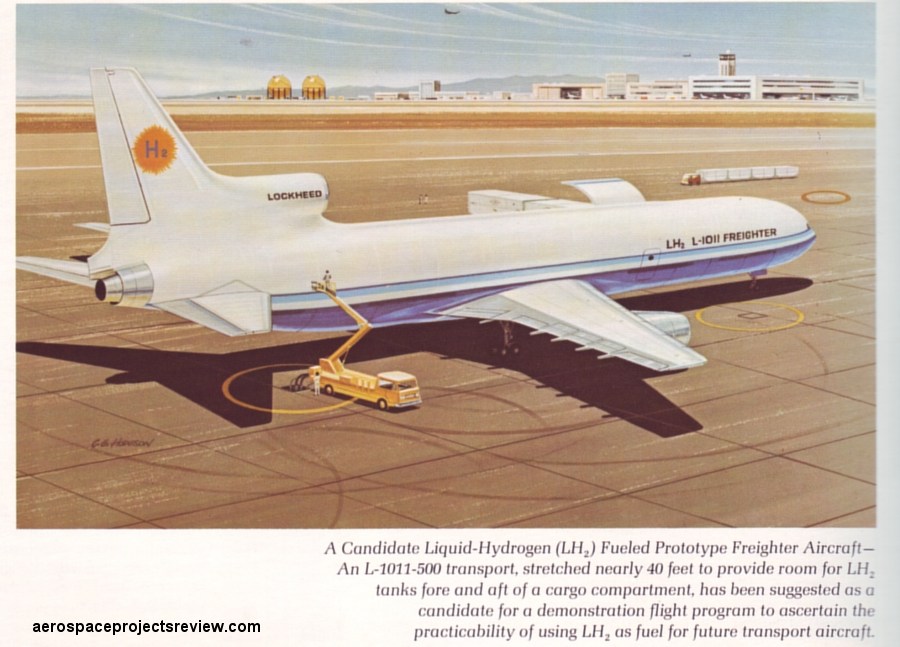As the OPEC oil embargo of the 1970’s ground down the American economy and jacked up the cost of transportation, many studies were made of alternative propulsion systems. For cars and buses and the like, electrical systems were at least theoretically feasible, though even today fully electric ground transport remains problematic. But electric aircraft were out of the question. Similarly, jetliners could not be retrofitted to burn coal or wood, or run off solar power. So that limited the options. One available option was liquid hydrogen. Long since proven on rockets, liquid hydrogen had been used to power jet engines in an experimental capacity. In theory it makes great jet fuel… lots of energy, and produced with no need of oil whatsoever (a nuclear reactor and an electrolysis system can do it, though there are more efficient means). But there were two major down sides: it’s a serious cryogen, requiring vacuum dewars for storage, and the density is pathetically low. Thus a jetliner would need fairly gigantic fuel tanks.
Lockheed of course studied the idea, using their last commercial airliner, the L-1011, as the basis. One concept called for giant fuel tanks to be carried on the wings, making the plane look almost like three aircraft flying in close formation; another idea was to stretch the fuselage and insert propellant tanks in front of and behind the passenger compartment. This would of course separate the passengers from the pilots. Also studied was the same idea but for an L-1011 freighter, artwork for which is shown below.
The idea would have almost certainly worked. But it would have been a logistical headache of the worst kind. None of the existing airport refueling infrastructure would have been usable, and the crews would have to be especially trained. Jet fuel can be stored in simple tanks; liquid hydrogen needs much more careful management to minimize boiloff.
